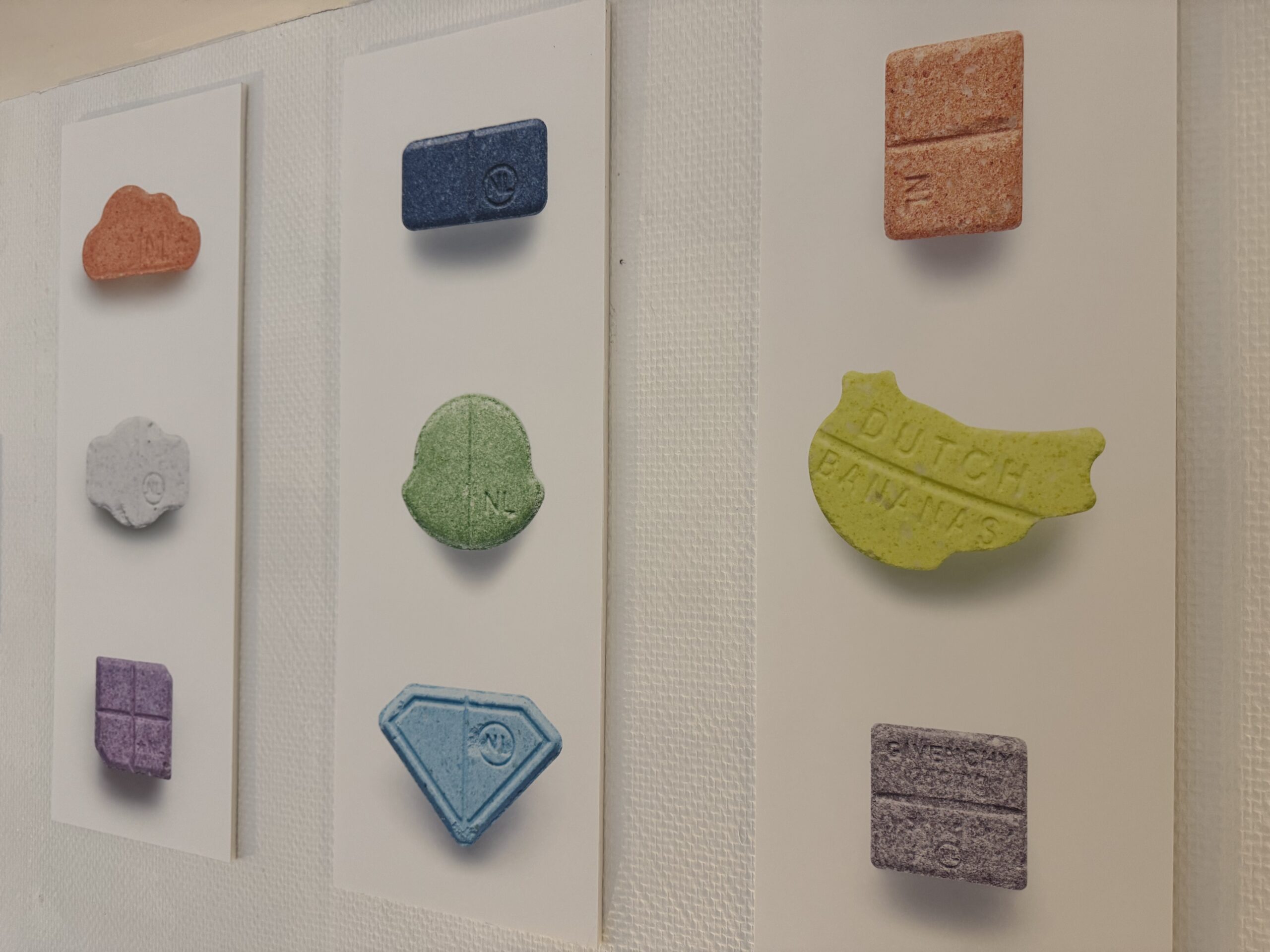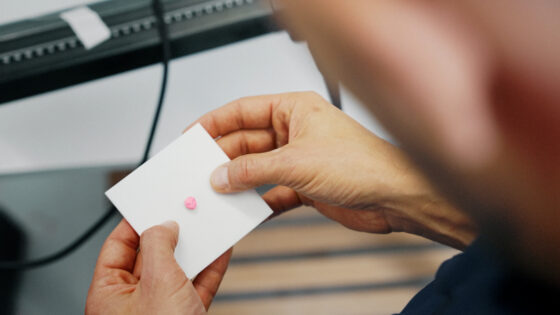Pop a pill art? Amsterdam show features ecstasy pill designs
Senay Boztas
When is an XTC pill more than just a pill? According to marketing expert Adam Fierman, when it is pop art.
In a three-year adventure into the shadowly world of Dutch illegal pill production, this American Amsterdammer has documented 700 “faces of ecstasy” – and some of them are currently on show in a temporary exhibition as part of the Amsterdam Dance Event.
“It is completely legal in the country to possess the stamps and even the presses for making pills,” he says. “Any pill that’s popular, other producers will buy those press stamps and just immediately start knocking it off.”
At first, different designs were a way for producers in the illegal – but globally dominant – Dutch chemical drug making industry to show a mark of quality for their pills. But, argues Fierman, the range and quality of designs has become an artistic endeavour in itself.
“Pop art was about taking something that was high and making it accessible to everyone,” he tells Dutch News, in the corner space on the Tweede Rozendwarsstraat that is currently serving as a gallery. “They take high-brow brands like Louis Vuitton and make it into a €5 pill. I see it as a modern Dutch pop art form.”
Working with photographer Peter Andrew Lusztyk and a number of unnamed collectors, he is producing a book of art and interviews to be published next year. The images of pills on show at the gallery range from fake Egyptian tombstones, Dutch bananas, the three wise monkeys and brands such as CNN and Heineken.
Others in his collection, he says, include a Nazi eagle and brands that normally fiercely enforce their copyrighted image – another potential charge that someone breaking the Opium act to produce the drugs could face.
He claims that companies in places such as China charge $90 for a high-quality pill stamp, delivered in two weeks, and so drug producers follow trends on popular television and social media.
“When we did our first show at the Vrij Paleis near the Dam Square in January last year, a man in a business suit came up to me and handed me his business card,” he said. “He was from one of the major alcohol brands. And he said: ‘Can you help us get our logo on XTC pills?’ And of course I said no, that would be a crime…But they see it as a marketing opportunity.”

Under Dutch law, XTC (MDMA) is classed as a hard drug and although it is not a punishable offense to use hard drugs, possession, trading, selling or making them is banned. Use of MDMA is linked with risks including overheating, heart and blood vessel problems, excess water intake and psychological problems, according to drug expert organisation Jellinek.
While risks are “relatively low” compared to various other substances, there are no figures on the exact number of ecstasy-induced deaths and a 2024 Dutch state committee recommended keeping it on the hard drugs list due to the involvement of organised crime in mass production.
Dutch Candy: The Art of XTC is on show at the Serieuze Zaken Gallery this week
Thank you for donating to DutchNews.nl.
We could not provide the Dutch News service, and keep it free of charge, without the generous support of our readers. Your donations allow us to report on issues you tell us matter, and provide you with a summary of the most important Dutch news each day.
Make a donation